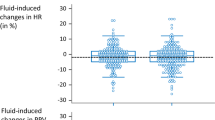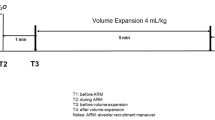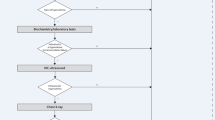Abstract
Resistance to fluid infusion can be derived from measurements of pressure at two or more flow rates. We measured resistance in 31 patients using a pressure-monitoring infusion pump (Model 560, IVAC) by recording pressure at five flow rates (0, 50,100, 200, and 300 mL/hr), and computing resistance as the slope of the pressure versus flow curve. Resistance was measured subcutaneously (Rtissue) and intravenously (Rvein) immediately after unsuccessful or successful IV catheter placement. In all patients, Rtissue was always greater than Rvein. The difference ranged from 23 resistance units (RU) to 4166 RU, with a mean difference of 1147 RU (p < 0.0001, Student'st-test). Unpaired analysis of the data was performed to assess the ability of resistance to indicate extravasation in the absence of prior Rvein measurement. The median value for Rvein was 62 RU (range −13.6 to 420 RU), and for Rtissue, 544 RU (range 65.7 to 4170 RU). Receiver operating characteristic (ROC) analysis revealed that a 200-RU threshold detected infiltration with 0.90 sensitivity and 0.91 specificity. We conclude that elevated resistance during fluid infusion is an important early and easily measurable finding in fluid extravasation.
Similar content being viewed by others
References
Maki DG. Infections associated with intravascular lines. In: Remington JS, Swatz MN, eds. Current Clinical Topics in Infections Diseases. New York: McGraw-Hill, 1982: 309–363
Tomford JW, Hershey CO, McLaren CE, Porter DK, Cohen DI. Intravenous therapy team and peripheral venons catheter associated complications: A prospective controlled study. Arch Intern Med 1984; 144: 1191–1194
Hershey CO, Tomford JW, McLaren CE, Porter DK, Cohen DI. The natural history of intravenous catheter-associated phlebitis. Arch Intern Med 1984; 144: 1373–1375
Upton J, Mulliken JB, Murray JE. Major intravenous extravasation injuries. Am J Surg 1979; 137: 497–506
Spengler RF, Arrowsmith JB, Kilarski DJ, Buchanan C, Von Behren L, Graham DR. Severe soft-tissue injury following intravenous infusion of phenytoin. Arch Intern Med 1988; 148: 1329–1333
Philip JH. A model for intravenous fluid administration. Proc IEEE/EMBS 1987; 1351–1353
Philip JH. Model for the physics and physiology of fluid administration. J Clin Monit 1989; 5: 123–134
Philip BK, Philip JH. Prediction of flow capability in intravenous systems: Implications for fluid resuscitation. J Clin Monit 1990; 6: 563–567
Philip JH. Resistance to fluid flow can detect venous catheter infiltration (abstract). Anesthesiology 1987; 67: A194
Scott DA, Cnaan A, Philip BK, et al. Resistance to fluid flow in normal veins. J Clin Monit 1996 (This issue)
Metz CE. Basic principles of ROC analysis. Semin Nucl Med 1978; 8: 283–298
Author information
Authors and Affiliations
Rights and permissions
About this article
Cite this article
Scott, D.A., Fox, J.A., Philip, B.K. et al. Detection of intravenous fluid extravasation using resistance measurements. J Clin Monitor Comput 12, 325–330 (1996). https://doi.org/10.1007/BF02221754
Received:
Revised:
Accepted:
Issue Date:
DOI: https://doi.org/10.1007/BF02221754




